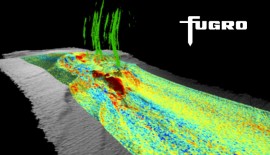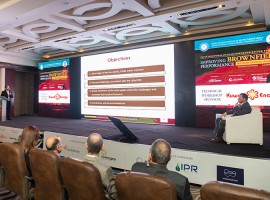By Salma Essam
Many countries are lining up their efforts to come up with new ways of gas production in a world that highly depends on energy. The successful development of world’s vast unconventional gas hinges critically on the advanced methods used. Yet, easily overlooked are the social risks brought about by drilling in unconventional areas. In fact, it is important to apply a set of principles that would guarantee the public acceptance of drilling unconventionally.
This would inevitably maintain and earn the industry a “social license to operate.” International Oil Companies (IOCs), therefore, are encouraged to treat these anxieties with the highest practical rules to warrant consent to unconventional hydrocarbon production.
Watch Where You Drill
Production of unconventional gas is an intensive industrial process surpassing the conventional gas development in terms of imposing more serious footprint. This is because more wells are needed and much complex techniques are required to enhance the flow of the gas from the well. In essence, the scale of development has major implications and effects on local communities, especially regarding the location of the drilling activities and the water resources. In other words, drilling activities in unconventional fields bear massive impacts on the surrounding areas of the geophysical characteristics of the site. Therefore, it is recommended that the operators choose the drilling sites wisely with regards to the community.
Operators should opt for locations that would have the least effects on local communities in terms of heritage, land use, individual livelihoods, and the environment. In this sense, The International Energy Agency Report (IEA) – Golden Rules for a Golden Age of Gas, published in 2012 stated: “The choice of the well site is a moment when engagement with local stakeholders and regulators needs to be handled with the utmost care.” Therefore, the geological subsurface must be a primary consideration when operators choose the well site. Additionally, dense areas, local ecology, roads, infrastructure facilities, and access of water should be taken into consideration. Of all the factors mentioned, the geology of the area can be more challenging. Flawed assessment of geological feature brings about deep fault in drilling that may generate earthquakes or give way to fluids to pass between geological strata.
It is essential that the operators properly survey the geology of area to pinpoint where the drilling can take place and where to hydraulically fracture. In fact, surveillance helps assess the risk that deep faults or other geological features that could generate such as earthquakes or the passage of fluids between geological strata. But in order to properly drill, the companies need to put forward a profound plan. Careful planning can help enhance the productivity and recovery rates of wells by reducing the number of wells that need to be drilled and decrease the intensity of hydraulic fracturing. In turn, this will help decrease the environmental impact drilling incur on the atmosphere. A careful plan of the geological features of the drilled sites is important in avoiding operations in areas where deep faults may create other risks, even if triggering an earthquake is of slight concern.
In addition, operators need to survey for the presence of old boreholes or methane that may occur in shallow pockets above the source rock. They further need to adjust drilling sites or the passage of the wellbore to avoid the areas that contain methane. Monitoring and controlling are as important as planning and surveying. In this sense, IOCs should firmly keep an eye on the drilling sites to ensure that hydraulic fractures do not extend beyond gas producing formation. Despite the fact that the risk of leakage of the fracturing fluid is unlikely since that the aquifers are located at much shallower depths, the IEA report explains that “such migration is theoretically possible in certain exceptional circumstances.”
Socially Integrated Engagement
As much as it is important for the operator to apply the latest technologies for extracting the highest quantities of energy from unconventional locations, it is equally critical to engage the public in each phase of a development. Involvement with local communities and residents of drilling areas is essential to address public concerns prior to drilling operations. Operators should provide sufficient space for the community to voice comments on plans, operations, and performance, as the case of Canadian companies affirms. Senior Director, Africa, AIDO & IFI’s Europe and Emerging Markets, Alberta, Canada, Shane M. Jaffer, stated in an exclusive interview with Egypt Oil&Gas that “a lot of consultations take place in Canada before any oil and gas development takes place and that social license is derived with the communities, companies, as well as the government.” Jaffer further emphasized that “if the development does take place, community engagement needs to take place too, as there need to be benefits for all parties.”
IOCs are thus expected to disclose the activity plans by explaining their production practices, environmental and safety standards they adhere to, and how they will contain any health risks resulting from the operations. One example that can be drawn in this sense is the leading effort of Schlumberger as a service provider for drilling activities in Egypt. The Egyptian unconventional field of Apollonia is currently being drilled with high quality equipments that Schlumberger supplies. And despite its location in the Western Desert, where the presence of inhabitants is scarce, the company strictly complies with environmental standards to contain any social discontents and secure a social license to operate. In an interview with Egypt Oil&Gas, Vice President and General Manager, Schlumberger, Hussein Fouad El Ghazzawi affirmed this, saying: “The environment is very important for us. In Schlumberger, we always tell our people that they are all empowered to stop the operation when they feel some unsafe acts are being conducted, including environmental hazards. It is our home and we are very careful about taking all the environmental standards into account and comply by them. All stakeholders invest a lot in planning such big projects like Apollonia, and under this scheme, the environmental standards are always on top of our priorities.”
A critical part of earning public trust is to establish baselines for the main environmental indicators before starting drilling such as the quality of the groundwater, whose baseline can be useful in comparing water levels and water quality in hydraulic fracturing. This is in addition to the spillovers the new drilling activities withhold for the ecology. In essence, the resource management of the operator and regulatory agencies should bear a responsibility of sharing the informative data collected with the public to give them an opportunity to address any concerns raised.
Next to establishing indicators, data measurement tends to be of equal importance. In other words, measuring volumes of used water and effect of methane and other air emissions should be taken into account. The high-level monitoring, tracking, and documentation of waste water is essential for prompting and ensuring its proper treatment and disposal. Revealing waste water characteristics, alongside information on fracturing fluid additives and volumes must be mandatory before the commencement of the drilling operations. Effective measurement and reliable information are crucial factors that ensure transparency, and hence, public confidence will inevitably follow.
Yet, the commercial competition among different operators may result in nondisclosure of information and chemicals used in hydraulic fracturing processes and the volumes involved. This practice will likely bring about mistrust among local communities and, in turn, the operator will lose the social license to operate.
Governments’ Role
In this regard, the governments should play a role in establishing a framework for disclosure that will involve the community in the processes before any operations are performed. The key task of the public authorities is thus to offer reliable and scientific background information that pave way for an informative debate among stakeholders, according to the IEA’s report. The governments should demonstrate socially responsible regulations and strategies when drilling in unconventional fields take place. Operators should then strictly adhere to these policies to satisfy the population and obtain a social license for their business.
In fact, these requirements put substantial demands on policy-makers and regulators. It is, therefore, recommended that the governments should place regulatory arrangements to unconventional drilling through a trained staff. As existing regulatory bodies may require new resources and reformulated functions, the need for a completely new regulatory body needs to be considered and a suitable regulatory regime should be placed.
In addition, the regulatory body will need to be independent from the industry, yet, work closely with industry leaders. It should have the modern tools to address the social concerns and should secure funding from IOCs prior to development activities. This could happen through imposing a mandatory amount of payment on the operators at the time of awarding the exploration rights, in efforts to secure sufficient funds. In this sense, the challenge for policy-makers is beheld within finding the balance between the need to decrease negative environmental and social effects, while fostering responsibility from operators developing the fields. Not only will this mitigate social and environmental risks, it will further bolster the industry’s performance, which in turn, will lift the overall economy of any country.
Nevertheless, adopting certain environmental and social strategies and introducing new regulations are not easy jobs. Indeed, the situation is dynamic and the sector has the potential to expand at a rapid pace especially in resource-rich areas where the governments and IOCs need to act promptly to anticipate future demands and place necessary measures in their right places. Even if strict environmental standards are enforced, the risk of water contamination is always present especially when proper monitoring is not present. In order to contain this, the government has to take informed decisions by applying rigorous data collection, carrying out assessments and monitoring water requirements, and measuring the quality of water produced. This will help reassure existing water users, who are skeptical about the availability and quality of water.
These measures will further help the local communities to have a clear knowledge of the challenges ahead, receive appropriate response for their questions, and understand the benefits associated with the developments.
The prospects of obtaining a social license for unconventional drilling hinge to a large extent on whether the policy makers and the industry workers can manage the social risks that hold within environmental risks on a basis that would guarantee public consent. In addition, and in order to do that, judgment at highest political levels is required and detailed and prescriptive provisions may be necessary. If IOCs contained these challenges at the pre-development stage, a social license to operate during drilling operations can be guaranteed.








